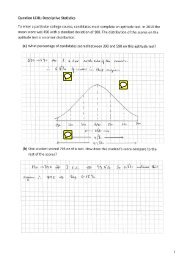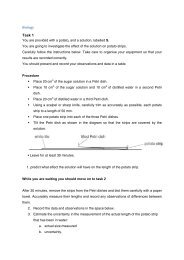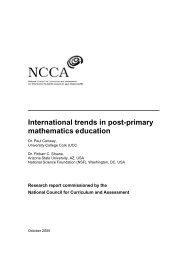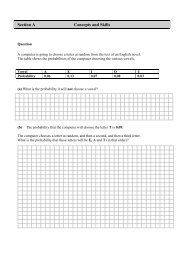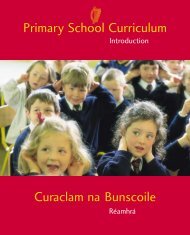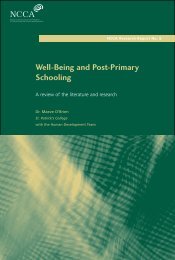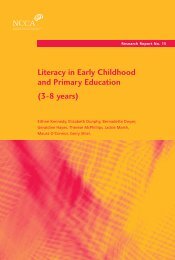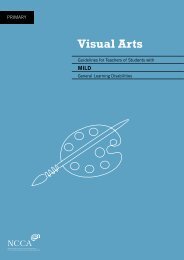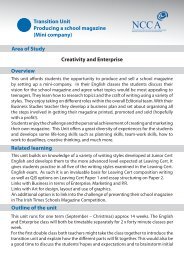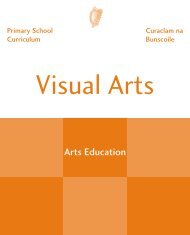Up and Away - National Council for Curriculum and Assessment
Up and Away - National Council for Curriculum and Assessment
Up and Away - National Council for Curriculum and Assessment
Create successful ePaper yourself
Turn your PDF publications into a flip-book with our unique Google optimized e-Paper software.
198<br />
Developing writing skills – Worksheets C-F<br />
Worksheets C-F have been designed specifically to assist teachers working with pupils at different stages<br />
in the early development of their writing skills. The order in which the worksheets are presented,<br />
there<strong>for</strong>e, is not important. They are to be used according to the needs of individual pupils, <strong>and</strong> the<br />
specific writing skill which is being developed. The worksheets can be used in the following ways:<br />
Worksheet C – writing letters<br />
Write simple sentences on the line at the top of the page – e.g. ‘I have a brother’, ‘I like spring’, ‘I speak<br />
Arabic’. The letters <strong>for</strong> writing practice are drawn from the words ‘brother’, ‘spring’ <strong>and</strong> ‘Arabic’.<br />
Words in pictures<br />
Use pictures containing words in clear context. Pictures featuring signs (e.g. ‘park’, ‘zoo’, ‘cinema’) are<br />
ideal. Talk about the picture with the pupils, <strong>and</strong> ask them what they think the word is. Use letter flash<br />
cards to focus on the letters <strong>and</strong> then write the word at the top of Worksheet C <strong>for</strong> writing practice.<br />
Worksheet D – extra practice<br />
These pages are <strong>for</strong> additional practice, either in class or at home. Letters which pupils find difficult can<br />
be identified <strong>for</strong> extra practice. Write a letter next to the one on the page to indicate the letter(s) which<br />
pupils are to practise.<br />
Worksheet E – <strong>for</strong>ming smaller letters<br />
These pages focus on developing pupils’ ability to <strong>for</strong>m smaller letters. In turn, this prepares them <strong>for</strong><br />
reading smaller print.<br />
Use Worksheet E to focus on, <strong>for</strong> example, writing the ‘tall’ letters only.<br />
These pages can also be used in the same way as Worksheets C <strong>and</strong> D.<br />
Worksheet F – writing words <strong>and</strong> sentences<br />
This can be used <strong>for</strong> further practice in writing letters. It can also be used in numerous ways to practice<br />
the writing of words:<br />
At the start of each line write the name of a different member of the class, or the country they are<br />
from. Pupils write the names across each line.<br />
After working with new vocabulary, write the words at the beginning of each line <strong>for</strong> pupils to<br />
practise. This also serves to rein<strong>for</strong>ce the learning of the new vocabulary.<br />
N.B. If the vocabulary is theme based, write the theme as a title at the top of the page. The page<br />
then becomes a record of new vocabulary <strong>and</strong> can be put in the Dossier section of the<br />
European Language Portfolio <strong>for</strong> future reference.<br />
Write simple sentences at the top of the page <strong>for</strong> pupils to practice – e.g. ‘I am from Angola’, ‘I like<br />
apples’.<br />
Note<br />
The simple design of Worksheets D <strong>and</strong> E allows parents to become involved in the early development<br />
of their children’s writing skills.



